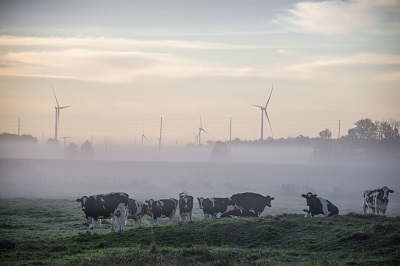 Wednesday, May 8, 2024
Wednesday, May 8, 2024  Wednesday, May 8, 2024
Wednesday, May 8, 2024 
OTTAWA, Jan. 31, 2019 /CNW/ – Canada’s wind energy industry further expanded its installed capacity in 2018, while solidifying its status as the lowest-cost source of new electricity generation. Newly commissioned projects brought total national wind energy capacity to close to 13,000 megawatts (MW). Meanwhile, competitive auction results in Saskatchewan and Alberta confirmed the wind industry’s ability to continue to deliver record-low prices.
The six wind energy projects that were powered up in 2018 added 566 MW of installed capacity – a continuation of steady growth that contributed to an average annual growth rate of 20 per cent per year since 2008. Two new projects are located in each of New Brunswick, Quebec and Ontario, and two of the six have both community and First Nations ownership stakes. Quebec accounts for about two-thirds of newly installed capacity in 2018.
Both Saskatchewan and Alberta contracted for significant additional new wind energy capacity in 2018 at an average bid price of $42 and $39 per megawatt-hour, respectively, which is comparable to the record low average bid price of $37 recorded in Alberta in late 2017. Wind energy figures prominently in these provinces’ progressive strategies to increase renewable generation. Downward wind energy price trends were confirmed by a 2018 U.S. analysis (Lazard 12.0) which found a further seven per cent year-over-year decline, and a 69 per cent decline since 2009.
Total installed wind energy capacity in Canada is now 12,816 MW, enough to meet the needs of approximately 3.3 million homes. Wind energy production meets approximately 6 per cent of Canada’s electricity demand – and more than that in jurisdictions such as P.E.I. (28 per cent), Nova Scotia (12 per cent), Ontario (8 per cent), Alberta (7 per cent), and New Brunswick (7 per cent).
In its most recent business-as-usual energy supply and demand projection, the National Energy Board indicates wind energy is forecast to add approximately 510 MW of capacity annually going forward, accounting for 27 per cent of the new electricity generation Canada will need between 2017 and 2040. The industry has a clear ability to outperform this outlook however, given annual capacity increases of closer to 1,000 MW on average over the last decade, and wind energy’s low cost and non-greenhouse gas emitting attributes.
For 2019, CanWEA expects to see approximately 1,000 MW of new wind energy projects commissioned, including the projects contracted under Alberta’s first renewable energy procurement and projects currently under construction in Ontario, as well as the Western Lily wind farm that came on line in southeast Saskatchewan this month. National installed capacity has doubled since 2012.
Quote
“Each year, the wind energy industry provides more clean and low-cost electricity to Canadians and increases its contributions to a modern and reliable electricity grid. Wind is a success story across the country – helping meet electricity demand in a way that is consistent with Canada’s climate ambitions and that benefits landowners, rural and Indigenous communities, and the economy.”
– Robert Hornung, President, Canadian Wind Energy Association
Background
About the Canadian Wind Energy Association
CanWEA is the voice of Canada’s wind energy industry, actively promoting the responsible and sustainable growth of wind energy. A national non-profit association, CanWEA serves as Canada’s leading source of credible information about wind energy and its social, economic and environmental benefits. Join us on Facebook, follow us on Twitter and LinkedIn. Learn more at canwea.ca.
Watch the video and learn more about Construction Links Network – the peer-to-peer network sharing platform for the construction, building and design community.
Ideal for YOUR Press Releases | Project Updates | New Appointments | Awards & Milestones | Company News | New Products/Services | Brochures | Videos | Infographics | Blog Sharing | Events and More